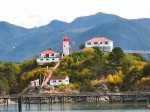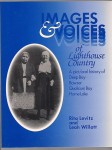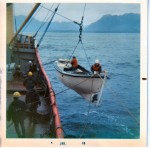
I receive links to lighthouse stories in the most unbelievable ways. This one arrived in the middle of an email addressed to someone else, which was then passed on to me.
After contacting this first writer I was passed on to another. To keep track of all my contacts I think I will soon need a secretary!
The first writer was Ms. R. Dawson, and her grandparents were on five British Columbia lighthouses for a total of twenty plus years staring in the 1940s. Ms. Dawson describes herself as an activist and I believe she is onboard with the lighthouse keepers against automation as she says: “Lighthouses have been under attack for decades by federal government politicians who have no idea as to their worth and see them as an easy target.”
After contacting Ms. Dawson, I was told that her Aunt Juanita was older and had more stories to tell, and that Aunt Juanita is the sole surviving child of Ms. Dawson’s grandparents/Juanita’s parents. So, Ms. Dawson contacted Aunt Juanita, and I then received an email from Juanita’s husband Roy DuLong. Continue reading Life on the Lighthouses c. 1950s to 1960s














